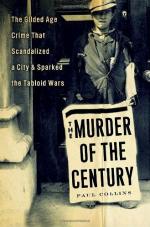|
This section contains 7,639 words (approx. 26 pages at 300 words per page) |

|
SOURCE: “The Soldier and the Aesthete: Homosexuality and Popular Culture in Gilded Age America,” in Journal of American Studies, Vol. 30, No. 1, April, 1996, pp. 25-46.
In the following excerpt, Blanchard argues that with the increased aestheticism of the Gilded Age came a more open acceptance of homosexuality and alternative definitions of manhood.
The aftermath of civil strife, note some historians, can change perceptions of gender. Particularly for males, the effect of exhaustive internal wars and the ensuing collapse of the warrior ideal relegates the soldier/hero to a marginal iconological status. Linda L. Carroll has persuasively argued, for instance, that, following the Italian wars, one finds the “damaged” images of males in Renaissance art: bowed heads, display of stomach, presentation of buttocks. In fact, male weakness and “effeminacy” can, notes Linda Dowling, follow on the military collapse of any collective state. Arthur N. Gilbert argues, in contrast, that historically...
|
This section contains 7,639 words (approx. 26 pages at 300 words per page) |

|


